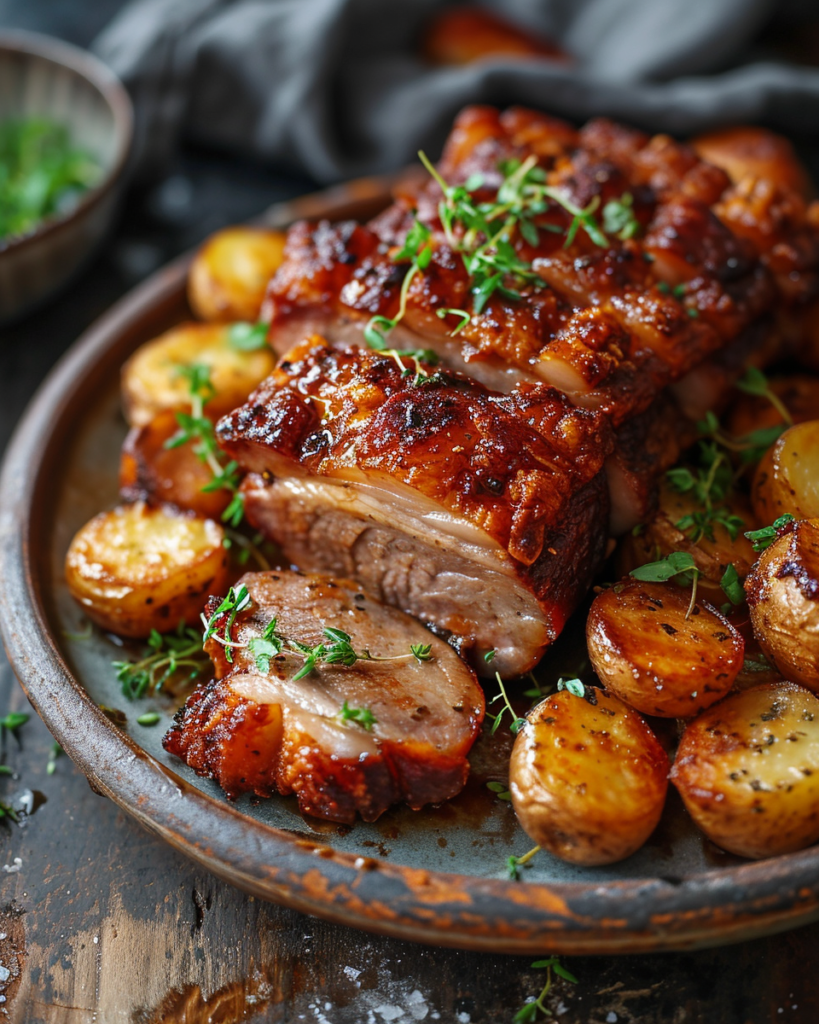
High Welfare Pork Recipes, In today’s culinary world, where ethics and sustainability are as crucial as flavour, choosing high-welfare pork is a conscientious decision. Affordable cuts of pork can be a gastronomic delight when sourced responsibly. This blog post delves into the world of High Welfare Pork Recipes, highlighting the importance of avoiding factory-farmed products and embracing lesser-known, budget-friendly cuts that don’t compromise on welfare or taste.
The Importance of High Welfare Pork High-welfare pork comes from farms that prioritize the well-being of their animals. These pigs are raised in humane conditions, with ample space, natural environments, and without unnecessary antibiotics. This approach not only ensures a better life for the pigs but also impacts the quality and taste of the meat. In contrast, factory farming often involves overcrowding, limited mobility, and the routine use of antibiotics, which raises concerns about animal welfare and antibiotic resistance.
Why Choose Sustainable Pork Cuts?
- Ethical Choice: Choosing high-welfare pork supports farming practices that respect animal welfare and environmental sustainability.
- Healthier Option: Meat from high-welfare farms is often free from unnecessary antibiotics and hormones, making it a healthier choice.
- Richer Flavor: Many chefs and food enthusiasts report that pork from well-cared-for animals offers a superior taste and texture.
Affordable and Delicious Pork Cuts
- Pork Shoulder: Known for its rich flavour and tenderness when slow-cooked. Ideal for roasts, stews, and pulled pork recipes.
- Pork Belly: Its succulent fat layer makes it perfect for roasting or making crispy pork cracklings.
- Ham Hock: A budget-friendly cut that’s great for soups, broths, and terrines.
- Pork Cheek: Once overlooked, this cut is gaining popularity for its deep flavour, especially in braised dishes.
- Pork Ribs: Ideal for grilling or slow-roasting with a glaze.
Cooking Tips for the Best Results
- Slow Cooking: Tougher cuts like shoulder and hock benefit from long, slow cooking methods to become tender and flavorful.
- Marinating: Enhances the flavour, especially for grilling cuts like ribs and belly.
- Herbs and Spices: Experiment with a variety of seasonings to complement the rich taste of pork.
Where to Source High-Welfare Pork
- Local Butchers: Often have direct relationships with sustainable farmers.
- Farmers’ Markets: A great place to meet and buy directly from farmers.
- Specialty Stores: Offer a range of high-welfare and organic options.
- Online Suppliers: Convenient, with detailed information about farming practices.
Conclusion Embracing affordable cuts of high-welfare pork is a step towards responsible and delicious eating. It’s a choice that supports ethical farming, contributes to personal health, and provides a chance to explore a range of rich flavours in your cooking. Next time you’re planning a meal, consider these lesser-known cuts – not only will your taste buds thank you, but you’ll also be making a positive impact on the food system.
Incorporating Affordable, High-Welfare Pork Cuts into Delicious Recipes
After understanding the importance of choosing sustainable pork, let’s explore how to transform these affordable cuts into mouth-watering dishes. Here are some carefully crafted recipes that showcase the versatility and rich flavour of high-welfare pork cuts.
1. Slow Cooked Pork Shoulder with Apple Cider This recipe highlights the pork shoulder’s ability to absorb flavours and become irresistibly tender. Slow-cooked with apple cider, onions, and a blend of herbs, this dish is perfect for a hearty family meal. The apple cider adds a subtle sweetness, complementing the savoury depth of the pork.
2. Crispy Pork Belly with Asian Slaw Pork belly, when cooked right, offers a delightful contrast between crispy skin and succulent meat. Paired with a refreshing Asian slaw, this dish balances rich flavours with crisp, fresh vegetables. It’s an excellent example of how a simple cut can be elevated into a gourmet experience.
3. Smoky Ham Hock and Bean Stew Utilising the ham hock, this stew is a testament to the flavour-packed potential of lesser-used cuts. The smokiness of the ham hock infuses the beans and broth, creating a comforting and warming dish that’s perfect for colder evenings.
4. Herb Crusted Pork Loin Roast A classic roast with a twist, the pork loin is encrusted with a blend of fresh herbs and roasted to perfection. This dish showcases the leaner cut’s ability to be the star of a traditional Sunday roast, offering a succulent and flavourful centrepiece.
5. Spicy Pork Ribs with Honey Glaze For those who love a bit of spice, these pork ribs are a real treat. The honey glaze adds a sweet stickiness, while the spices bring a warming heat. Slow-roasted to achieve the perfect fall-off-the-bone tenderness, these ribs are ideal for a summer BBQ or a cosy night in.
6. Pork Vindaloo Where to start with the Vindaloo, the much-maligned curry that is linked to drunks on a Saturday night ordering the hottest curry. This pork Vindaloo bares little resemblance to the mismatch of curry house sauces with added chillies to create the Vindaloo.
Tips for Cooking High-Welfare Pork Recipes:
- Allow the meat to reach room temperature before cooking for even cooking.
- Don’t be afraid to season generously. High-welfare pork pairs beautifully with a variety of herbs and spices.
- Rest the meat after cooking. This allows the juices to redistribute, ensuring a moist and tender result.
By choosing high-welfare, affordable cuts of pork and preparing them with these recipes, you not only enjoy delicious meals but also contribute to a more ethical and sustainable food system. Each recipe is a celebration of flavour, quality, and responsible cooking practices.
High-Welfare Pork Recipes
Here are nine recipes using affordable cuts of pork like ham hocks, belly, and cheek, excluding offal. Each recipe includes a full list of ingredients, a detailed step-by-step cooking method, and a nutritional breakdown.
1. Ham Hock and Pea Soup
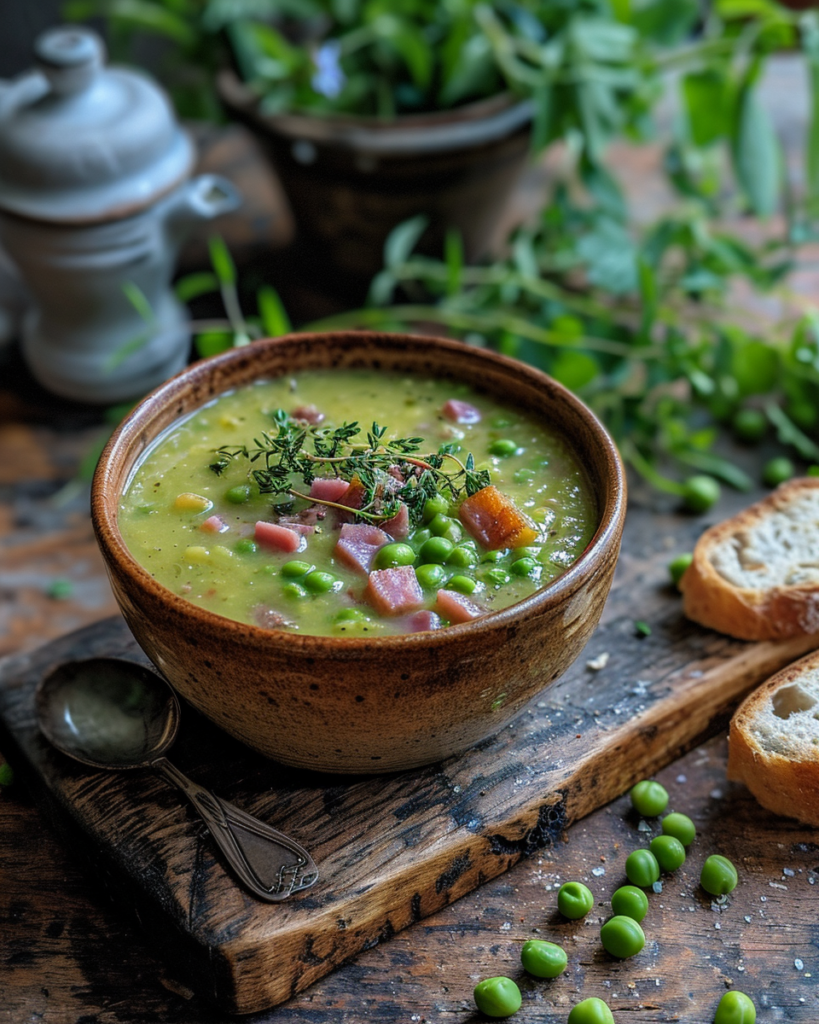
Ingredients:
- 1 smoked ham hock
- 2 carrots, diced
- 2 onions, chopped
- 3 celery sticks, chopped
- 300g split peas
- 2 litres chicken or vegetable stock
- 2 bay leaves
- Salt and pepper, to taste
Method:
- Place the ham hock in a large pot and cover with water. Bring to a boil, then simmer for 1 hour.
- Remove the ham hock and let it cool. Shred the meat and set aside.
- In the same pot, add carrots, onions, and celery. Cook until softened.
- Add split peas, stock, bay leaves, salt, and pepper. Simmer for 40 minutes.
- Return the shredded ham hock to the pot. Cook for an additional 20 minutes.
- Serve hot.
Nutritional Breakdown:
- Calories: 210 per serving
- Protein: 18g
- Carbohydrates: 22g
- Fat: 5g
2. Pork Belly with Caramelised Apples
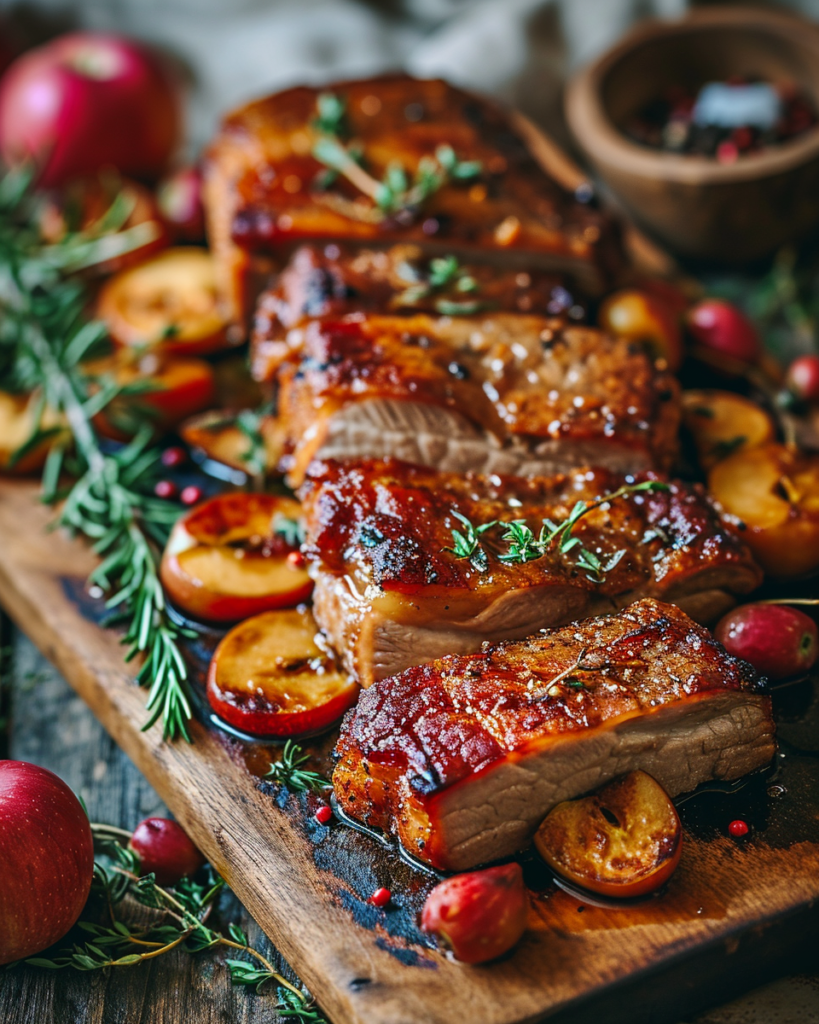
Ingredients:
- 1kg pork belly, skin scored
- 3 apples, sliced
- 2 tbsp brown sugar
- 2 tbsp cider vinegar
- 1 tbsp olive oil
- Salt and pepper, to taste
Method:
- Preheat the oven to 220°C (Gas Mark 7).
- Rub the pork belly with salt, pepper, and olive oil. Place in a roasting tin and roast for 30 minutes.
- Reduce the oven to 160°C (Gas Mark 3) and cook for 2 hours.
- In a pan, cook apples with brown sugar and cider vinegar until caramelised.
- Serve the pork belly with caramelised apples on top.
Nutritional Breakdown:
- Calories: 480 per serving
- Protein: 35g
- Carbohydrates: 18g
- Fat: 30g
3. Braised Pork Cheek with Root Vegetables
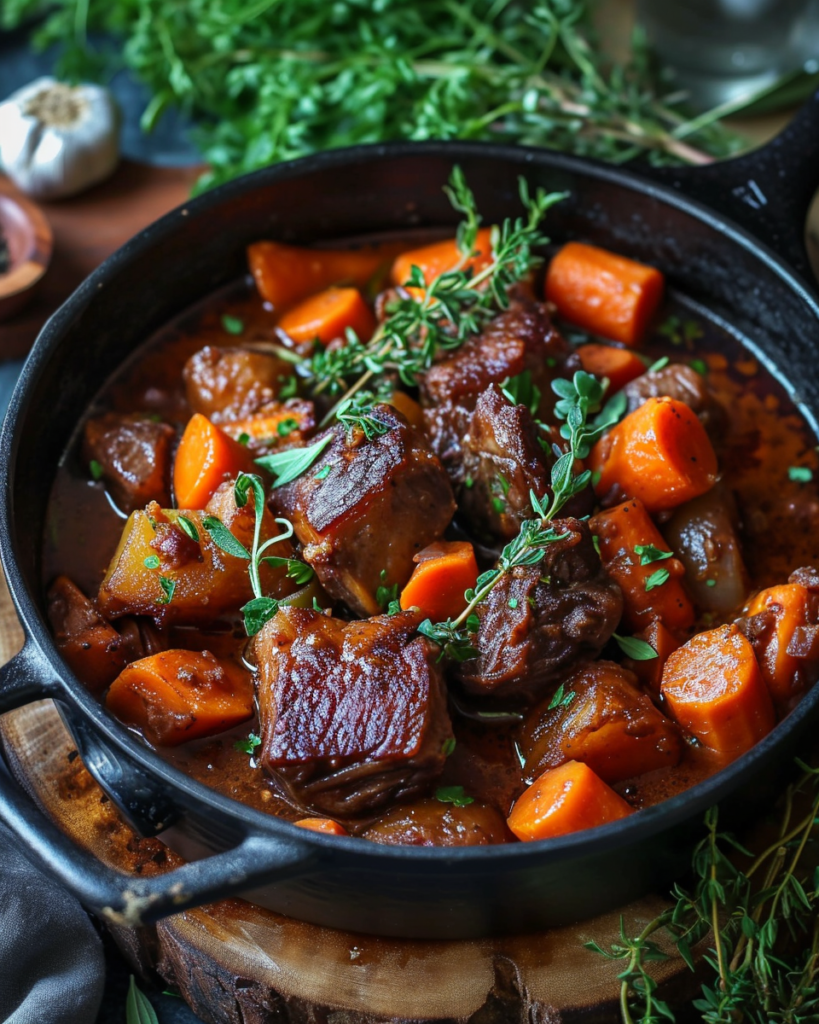
Ingredients:
- 4 pork cheeks, trimmed
- 2 carrots, chopped
- 2 parsnips, chopped
- 1 onion, chopped
- 2 garlic cloves, minced
- 500ml beef stock
- 2 tbsp tomato paste
- 1 tbsp olive oil
- Salt and pepper, to taste
Method:
- Season pork cheeks with salt and pepper. Brown in a pan with olive oil. Remove and set aside.
- In the same pan, add carrots, parsnips, onion, and garlic. Cook until softened.
- Add tomato paste and stock. Bring to a simmer.
- Return the pork cheeks to the pan. Cover and simmer for 2 hours.
- Serve the pork cheeks with vegetables and sauce.
Nutritional Breakdown:
- Calories: 310 per serving
- Protein: 25g
- Carbohydrates: 15g
- Fat: 15g
4. Sticky Pork Belly Ribs
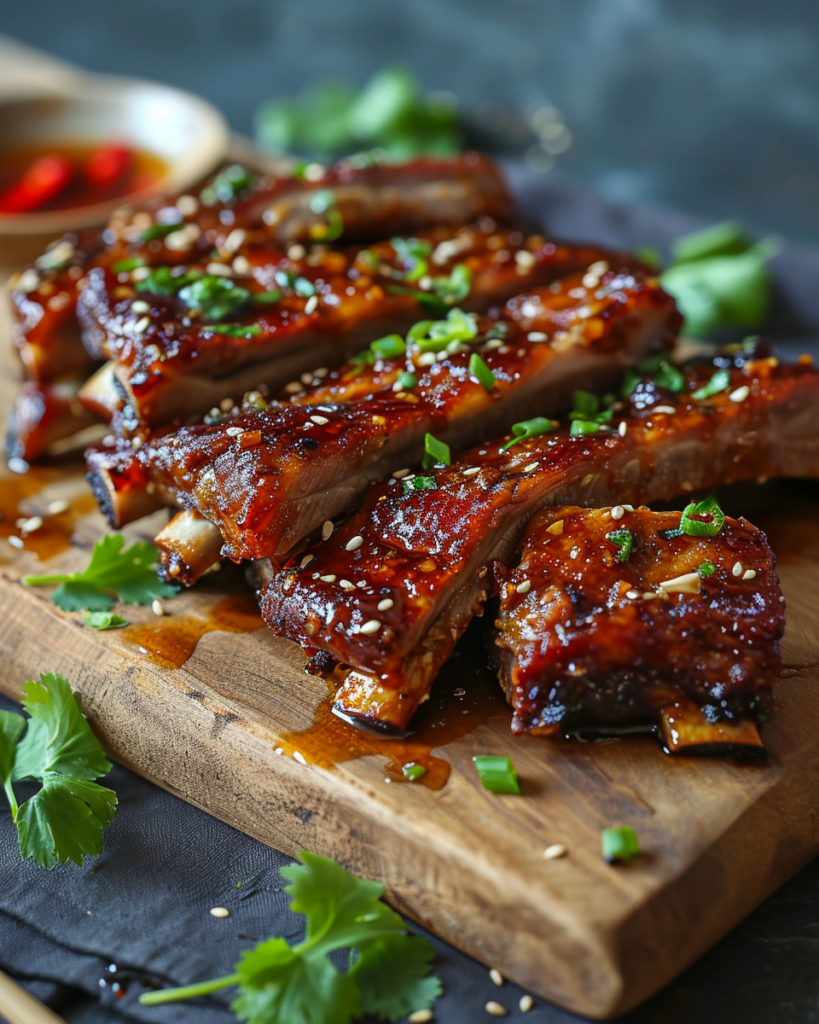
Ingredients:
- 1kg pork belly ribs
- 100ml soy sauce
- 2 tbsp honey
- 2 garlic cloves, minced
- 1 tbsp ginger, grated
- 1 tbsp sesame oil
- 1 tsp chilli flakes
Method:
- Preheat the oven to 180°C (Gas Mark 4).
- Combine soy sauce, honey, garlic, ginger, sesame oil, and chilli flakes in a bowl.
- Coat the ribs with the sauce and marinate for at least 1 hour.
- Place the ribs on a baking tray and cover with foil. Bake for 1 hour.
- Remove the foil and bake for an additional 30 minutes.
- Serve hot.
Nutritional Breakdown:
- Calories: 420 per serving
- Protein: 28g
- Carbohydrates: 15g
- Fat: 28g
5. Ham Hock Terrine
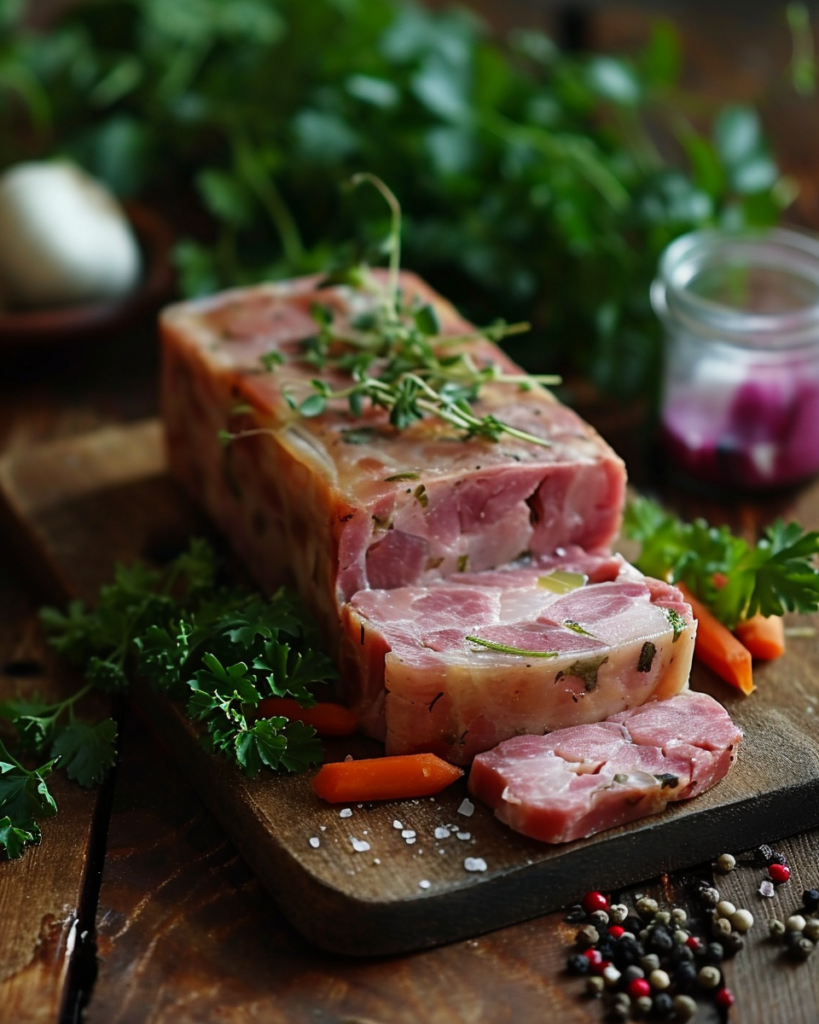
Ingredients:
- 2 smoked ham hocks
- 1 onion, quartered
- 2 carrots, chopped
- 1 leek, chopped
- 1 bouquet garni
- 1 tsp peppercorns
- Salt, to taste
- Parsley, chopped for garnish
Method:
- Place ham hocks, onion, carrots, leek, bouquet garni, and peppercorns in a large pot. Cover with water.
- Bring to a boil, then simmer for 3 hours.
- Remove the hocks and shred the meat. Strain the broth and reduce it to 500ml.
- Mix the meat with the reduced broth and season with salt.
- Pour into a terrine mold and refrigerate overnight.
- Serve sliced with parsley garnish.
Nutritional Breakdown:
- Calories: 230 per serving
- Protein: 25g
- Carbohydrates: 3g
- Fat: 12g
6. Slow-Cooked Pork Cheek Ragu
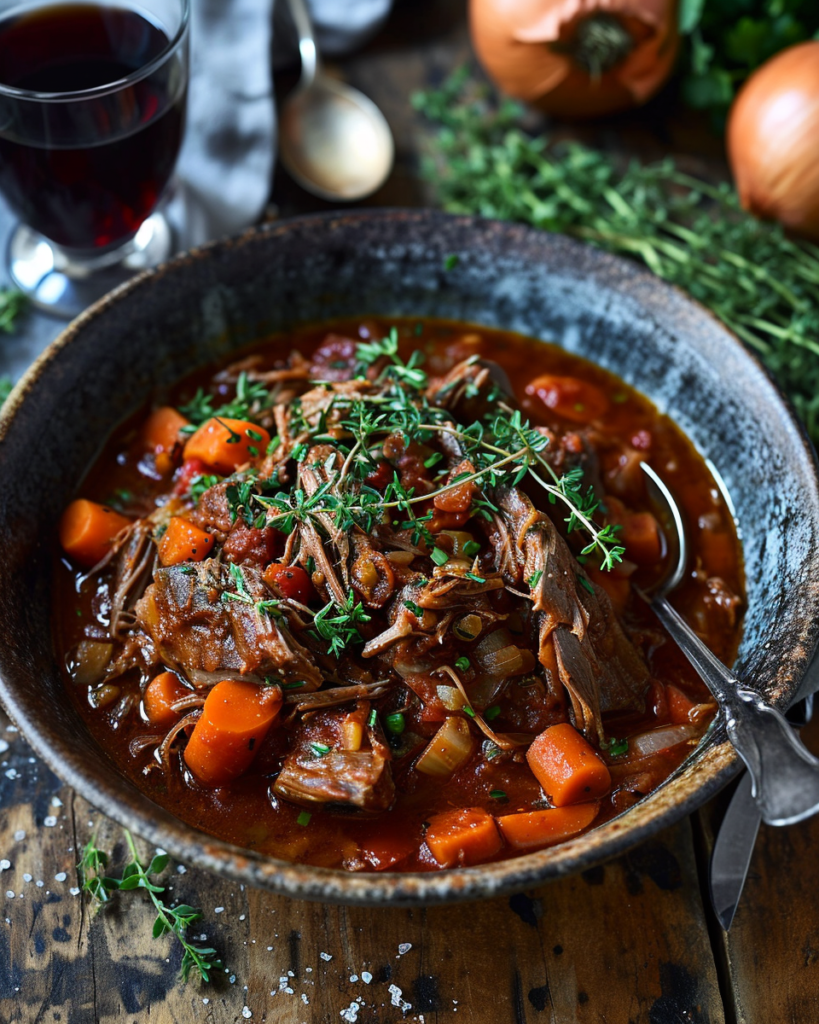
Ingredients:
- 4 pork cheeks, trimmed
- 1 onion, chopped
- 2 carrots, chopped
- 2 celery sticks, chopped
- 2 garlic cloves, minced
- 400g canned tomatoes
- 200ml red wine
- 2 tbsp olive oil
- Salt and pepper, to taste
Method:
- Season pork cheeks with salt and pepper. Brown in a pan with olive oil. Remove and set aside.
- In the same pan, add onion, carrots, celery, and garlic. Cook until softened.
- Add canned tomatoes and red wine. Bring to a simmer.
- Return the pork cheeks to the pan. Cover and simmer for 3 hours.
- Shred the pork cheeks and serve with pasta or polenta.
Nutritional Breakdown:
- Calories: 360 per serving
- Protein: 30g
- Carbohydrates: 18g
- Fat: 16g
7. Pork Belly Stir-Fry
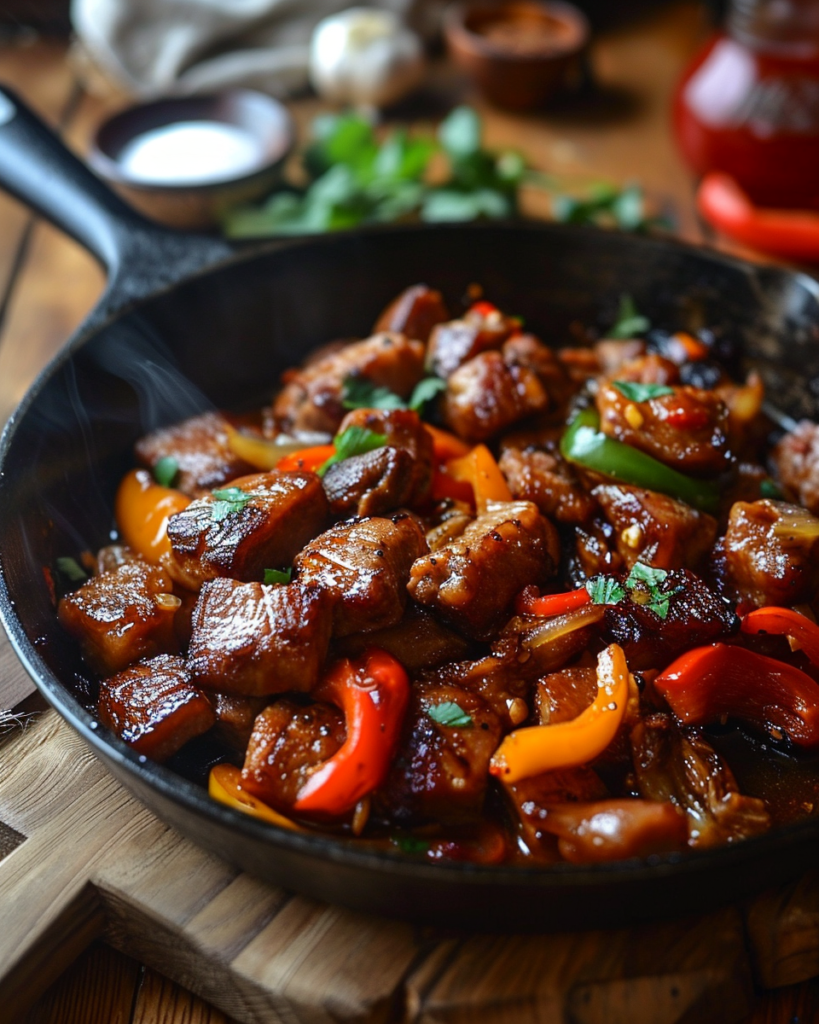
Ingredients:
- 500g pork belly, sliced
- 1 bell pepper, sliced
- 1 onion, sliced
- 2 garlic cloves, minced
- 1 tbsp soy sauce
- 1 tbsp oyster sauce
- 1 tsp sesame oil
- 1 tsp sugar
- 1 tbsp vegetable oil
Method:
- Heat vegetable oil in a wok or large pan.
- Add pork belly and cook until browned. Remove and set aside.
- In the same pan, add bell pepper, onion, and garlic. Cook for 2 minutes.
- Return the pork to the pan. Add soy sauce, oyster sauce, sesame oil, and sugar. Stir-fry for 5 minutes.
- Serve hot with rice or noodles.
Nutritional Breakdown:
- Calories: 320 per serving
- Protein: 15g
- Carbohydrates: 8g
- Fat: 25g
8. Smoky Ham Hock and Bean Stew

Ingredients:
- 2 smoked ham hocks
- 400g canned beans (like kidney or cannellini)
- 1 onion, chopped
- 2 carrots, chopped
- 2 celery sticks, chopped
- 2 garlic cloves, minced
- 1 litre chicken or vegetable stock
- 1 tsp smoked paprika
- 1 tbsp olive oil
- Salt and pepper, to taste
Method:
- Heat olive oil in a large pot. Add onion, carrots, celery, and garlic. Cook until softened.
- Add the ham hocks, beans, stock, and smoked paprika. Season with salt and pepper.
- Bring to a boil, then simmer for 2 hours or until the meat is tender.
- Remove the hocks, shred the meat, and return it to the pot.
- Serve hot with bread or on its own.
Nutritional Breakdown:
- Calories: 290 per serving
- Protein: 23g
- Carbohydrates: 25g
- Fat: 10g
9. Crispy Pork Belly with Asian Slaw
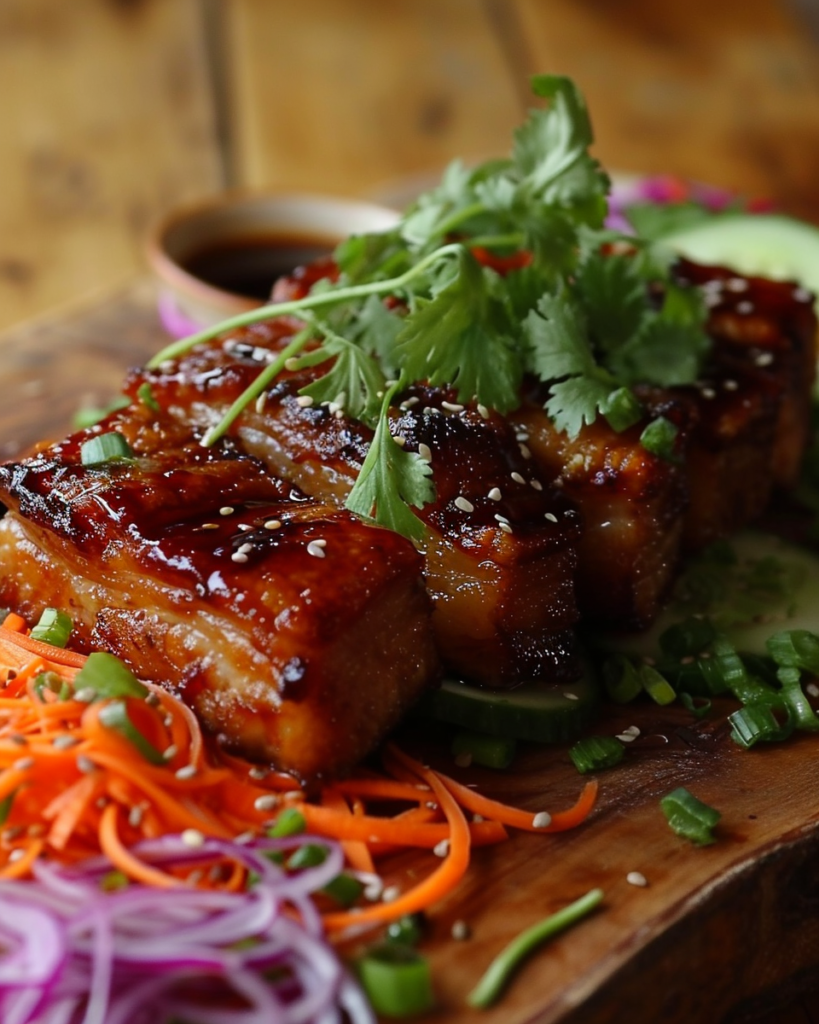
Ingredients:
- 1kg pork belly, skin scored
- 1 cucumber, julienned
- 1 carrot, julienned
- 1 red onion, thinly sliced
- 1 tbsp rice vinegar
- 1 tbsp soy sauce
- 1 tsp honey
- 1 tbsp sesame oil
- Salt and pepper, to taste
Method:
- Preheat the oven to 220°C (Gas Mark 7).
- Rub the pork belly with salt and place skin-side up in a roasting tin. Roast for 30 minutes.
- Reduce the heat to 160°C (Gas Mark 3) and roast for another 2 hours.
- Combine cucumber, carrot, red onion, rice vinegar, soy sauce, honey, and sesame oil to make the slaw.
- Slice the pork belly and serve with the Asian slaw.
Nutritional Breakdown:
- Calories: 500 per serving
- Protein: 35g
- Carbohydrates: 10g
- Fat: 35g